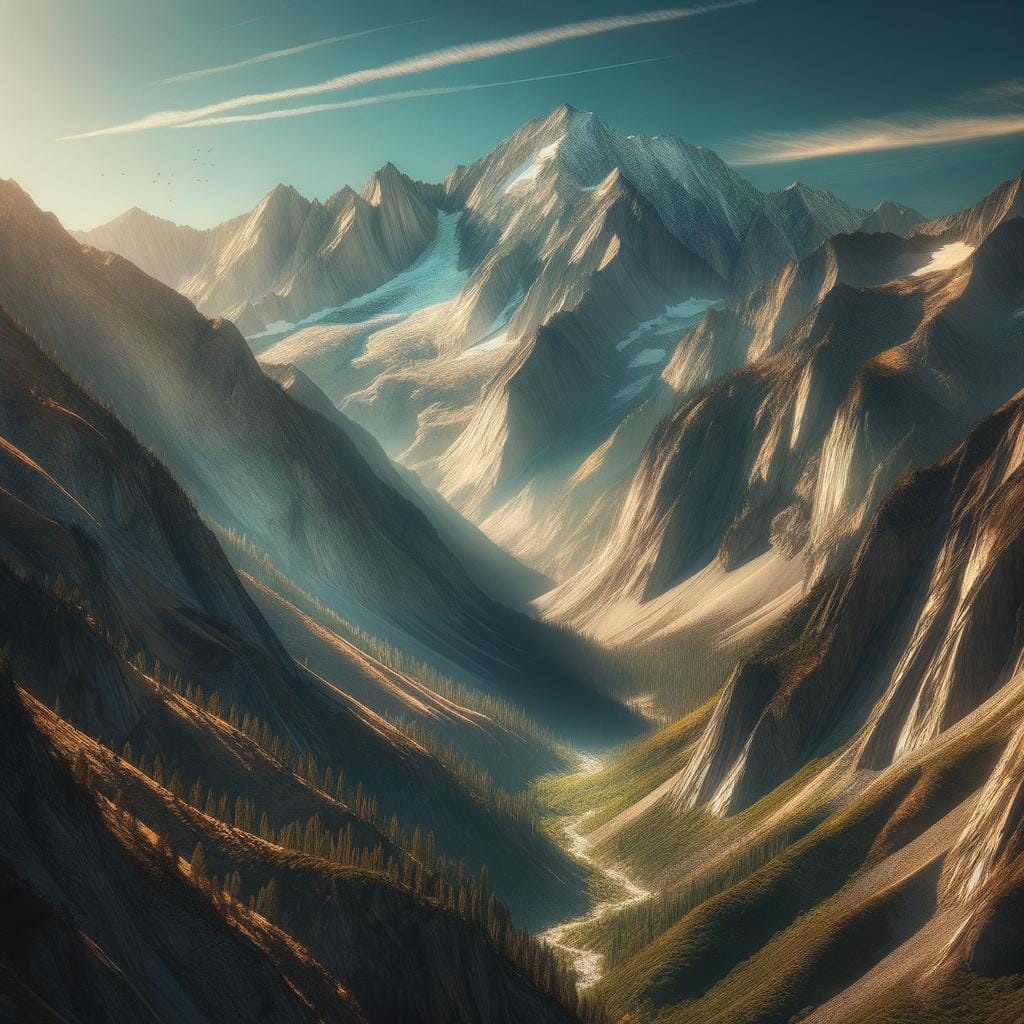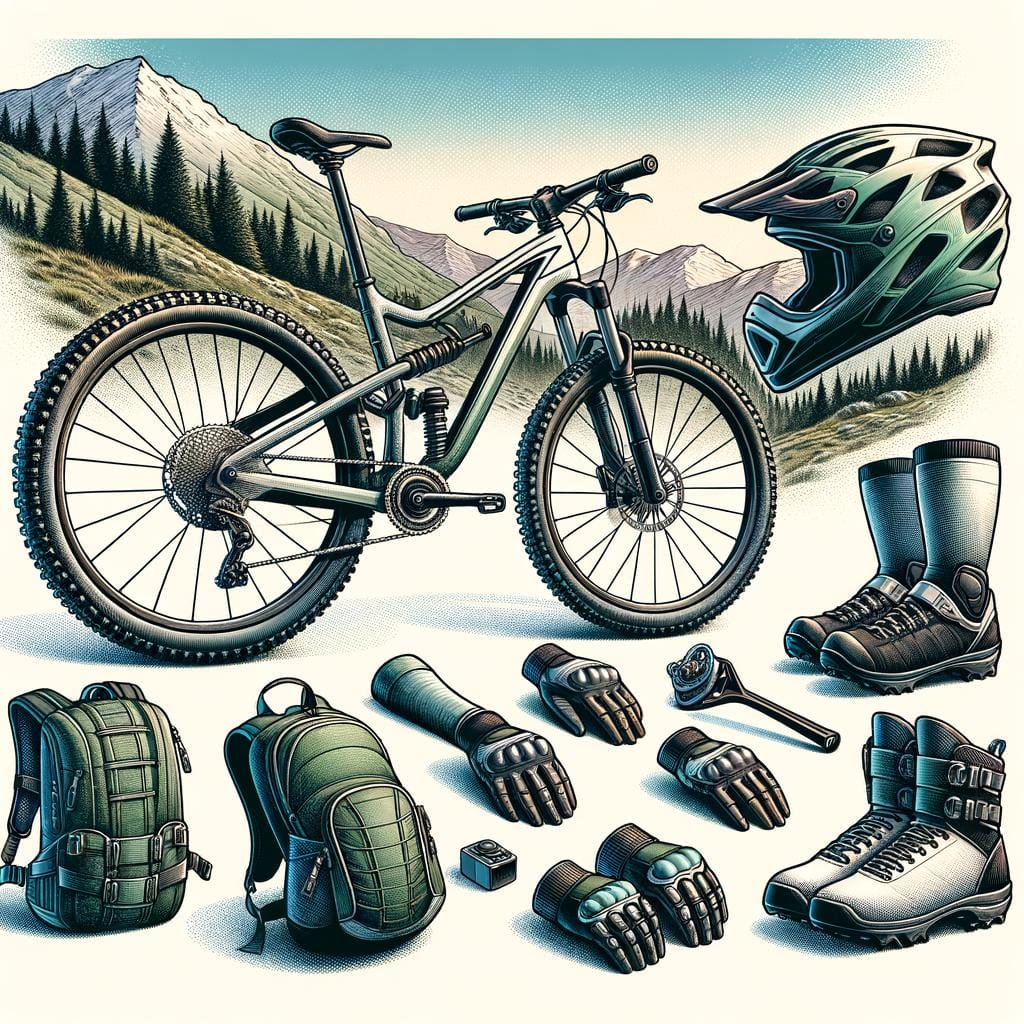Nestled high above sea level, the majesty of mountain slopes captivates the hearts and minds of all who venture into their towering presence. These breathtaking landscapes, sculpted by the forces of nature over millennia, offer a glimpse into the raw power and beauty of our planet’s geological wonders.
The rugged terrain of mountain slopes is a testament to the Earth’s ever-changing surface, shaped by tectonic forces and erosion over countless years. From towering peaks to steep valleys, each nook and cranny tells a story of the forces that have shaped it, offering geologists a window into the complex processes that have formed these magnificent features.
Not only do mountain slopes boast stunning geological formations, but they are also home to a myriad of plant and animal species that have adapted to thrive in the harsh conditions at high altitudes. The biodiversity found on mountain slopes is as diverse as it is unique, with species ranging from hardy alpine plants to elusive snow leopards making their home in these extreme environments.
The Formation of Mountain Slopes
Mountain slopes are not merely geographic features; they are the result of complex geological processes that have shaped these majestic landscapes over millions of years. The formation of mountain slopes begins with tectonic activity, where the Earth’s crust is subject to immense pressure and forces that lead to the uplifting and folding of rocks. This movement causes the gradual emergence of mountain ranges, with their iconic sloping sides that define their rugged beauty.
As mountains continue to rise, weathering and erosion play a crucial role in shaping their slopes. The action of wind, water, ice, and gravity slowly breaks down the rocks and sediments on the mountain slopes, leading to the formation of valleys, ridges, and cliffs. This constant process of erosion contributes to the unique topography of mountain slopes, creating steep inclines and dramatic escarpments that add to their allure.
Moreover, the presence of fault lines and seismic activity can further influence the formation of mountain slopes. Earthquakes and volcanic eruptions can abruptly alter the landscape by causing landslides, rockfalls, or even the creation of new peaks.
These dynamic geological events contribute to the ever-changing nature of mountain slopes, highlighting their resilience in the face of natural forces. Understanding the geological perspective behind the formation of mountain slopes provides valuable insights into these awe-inspiring terrains and deepens our appreciation for their enduring beauty.
Flora and Fauna on Mountain Slopes
The biodiversity found on mountain slopes is truly remarkable, showcasing a wide variety of flora and fauna that have adapted to thrive in high altitudes. From the towering coniferous trees like pine and fir to unique alpine plants such as saxifrage and edelweiss, these species have developed special characteristics to withstand the harsh conditions of mountain environments.
Additionally, mountain slopes are home to a diverse range of wildlife, including elusive creatures like snow leopards, mountain goats, and marmots. These animals have evolved over time to navigate the rugged terrain and extreme weather conditions present in such landscapes.
One fascinating aspect of the biodiversity on mountain slopes is the vertical distribution of habitats known as altitudinal zonation. This phenomenon creates distinct ecological zones at different elevations, each supporting its own set of plant and animal species.
For example, lower slopes may be covered in dense forests with bears and deer roaming about, while higher elevations may feature sparse vegetation inhabited by agile mountain goats and hardy grasses. This stratification of habitats contributes to the overall richness of biodiversity found on mountain slopes, making them crucial areas for conservation efforts.
Conserving the delicate ecosystems present on mountain slopes is essential not only for preserving biodiversity but also for maintaining ecosystem services that benefit surrounding regions. These high-altitude environments play a vital role in regulating water flow through watersheds, providing fresh water for communities downstream. By implementing sustainable practices and protected areas on mountain slopes, we can ensure that these biodiverse landscapes continue to thrive for generations to come despite challenges such as climate change and human encroachment.
| Flora | Fauna |
|---|---|
| Coniferous trees | Snow leopards |
| Alpine plants | Mountain goats |
| Saxifrage | Marmots |
Mountain Slopes Around the World
Mountain slopes are not only diverse in their geological formations but also in the regions they span around the world. From the majestic Rockies in North America to the towering Himalayas in Asia, these high-altitude landscapes offer unique experiences and breathtaking views for visitors and researchers alike. Each mountain range has its own distinct characteristics, shaping the flora, fauna, and even the culture of the surrounding areas.
The Rockies: North America’s Iconic Mountain Range
Stretching over 1,900 miles from Canada down to New Mexico, the Rocky Mountains are a prominent feature of the North American landscape. These rugged peaks are home to a variety of wildlife, including elk, bighorn sheep, and grizzly bears. Outdoor enthusiasts flock to ski resorts like Aspen and Whistler Blackcomb to carve through fresh powder on these iconic slopes.
The Himalayas: The Roof of the World
As the highest mountain range on Earth, the Himalayas hold a special place in both physical geography and spiritual significance. Mount Everest, the tallest peak in the world, attracts climbers from all corners of the globe seeking to conquer its formidable slopes.
The biodiversity found on these mountains is unrivaled, with rare species like snow leopards and Himalayan blue poppies thriving at extreme altitudes. Accessible from countries like Nepal, India, Bhutan, Tibet (China), and Pakistan – each offering their unique perspectives on this awe-inspiring natural wonder.
Exploring mountain slopes around the world offers not just physical challenges but also a chance to appreciate nature’s beauty at its most grandiose scale. With each range offering its own set of wonders and adventures awaiting those willing to trek through their rugged terrain or glide down their snowy descents – these mountains exemplify both power and serenity in equal measure.
The Thrill of Adventure
Skiing and snowboarding on mountain slopes are exhilarating winter sports that attract enthusiasts from around the world. The combination of stunning scenery, fresh powder snow, and the adrenaline rush of speeding down steep slopes makes for an unforgettable experience. Whether you’re a beginner learning the basics or a seasoned pro carving up challenging terrain, mountain slopes offer something for everyone seeking adventure in the great outdoors.
When hitting the slopes for skiing or snowboarding, it’s crucial to have the right gear to ensure safety and maximize enjoyment. From skis or a snowboard to boots, bindings, helmets, and goggles, having high-quality equipment can make all the difference. Additionally, dressing in layers to stay warm and dry is essential when braving the cold temperatures at higher elevations. Being prepared for changing weather conditions is key to having a successful day on the mountain slopes.
For those seeking a more immersive experience on mountain slopes, many resorts around the world offer opportunities for off-piste skiing or snowboarding. This allows adventurers to explore untouched areas of pristine snow away from designated trails, providing an added element of challenge and excitement.
However, it’s important to always be aware of avalanche risks when venturing into backcountry terrain and to have proper training and safety equipment such as beacons and shovels. The allure of untouched powder stashes on remote mountain slopes can be tempting but ensuring safety should always come first.
- Proper gear is essential for skiing or snowboarding on mountain slopes
- Layering clothing helps maintain warmth and dryness in cold conditions
- Off-piste skiing offers a more adventurous experience but requires caution
Conservation Efforts
Mountain slopes are home to incredibly fragile ecosystems that are vulnerable to environmental changes and human activities. Conservation efforts aimed at preserving these unique environments play a crucial role in maintaining biodiversity and protecting the delicate balance of mountain ecosystems.
One of the primary challenges faced in conservation is the threat of habitat loss due to deforestation, mining, and urban expansion on mountain slopes. These activities not only disrupt the natural habitat of flora and fauna but also lead to soil erosion and water pollution, impacting the entire ecosystem.
In response to these threats, various organizations and government agencies have implemented conservation projects focused on restoring degraded mountain slopes, enforcing protected areas, and promoting sustainable land management practices. These initiatives aim to safeguard the diverse range of plant and animal species that call mountain slopes their home. By preserving these habitats, conservationists can also support local communities that rely on mountain resources for their livelihoods, such as agriculture, forestry, and tourism.
Moreover, climate change poses an additional challenge to the conservation of mountain slopes around the world. Rising temperatures, shifting precipitation patterns, and melting glaciers are altering the ecosystems on high-altitude landscapes rapidly. As a result, conservation efforts need to adapt to these changing conditions by implementing strategies that mitigate the impacts of climate change on mountain slopes while ensuring the long-term resilience of these vital ecosystems for future generations.
| Conservation Challenges | Conservation Initiatives |
|---|---|
| Habitat loss due to deforestation | Restoration projects focused on degraded areas |
| Human activities like mining & urban expansion | Enforcement of protected areas & sustainable land management practices |
| Climate change impacts | Adaptation strategies to mitigate effects & promote resilience |
The Beauty of Mountain Slope Landscapes
Mountain slopes offer a breathtaking canvas for photographers around the world to capture stunning landscapes. The unique terrain, varying vegetation, and changing weather patterns make mountain slopes a photographer’s paradise. Whether it’s the play of light and shadows on rocky cliffs or the mist enveloping a dense forest, there is always something new and captivating to photograph on mountain slopes.
When exploring mountain slopes with a camera in hand, photographers can encounter a diverse range of subjects to capture. From the intricate details of alpine flowers to the grandeur of snow-capped peaks, each click of the shutter reveals a different aspect of mountain slope landscapes. Creating compelling compositions while navigating rugged terrain challenges photographers to think creatively and push their boundaries as they strive to capture the essence of these majestic locations.
To make the most out of photographing mountain slopes, it is essential for photographers to plan ahead and be ready for unpredictable conditions. Packing essential gear, choosing the right time of day for optimal lighting, and scouting locations in advance can significantly enhance the quality of images captured. Additionally, being mindful of preserving nature while capturing its beauty is crucial in maintaining the integrity of mountain slope ecosystems for future generations to appreciate.
- Plan photography trips during different seasons to capture diverse landscapes
- Experiment with angles and perspectives to create dynamic compositions
- Consider using filters or adjusting camera settings to enhance colors and textures
The Future of Mountain Slopes
Climate change poses a significant threat to mountain slopes around the world, impacting their delicate ecosystems and stunning landscapes. As temperatures rise globally, glaciers on mountain slopes are melting at alarming rates. The reduction in glacier coverage not only affects the availability of freshwater sources downstream but also alters the habitat for various plants and animals that rely on the cold and snowy environment.
Effects on Biodiversity
One of the most concerning impacts of climate change on mountain slopes is the disruption of biodiversity. Many species of plants and animals that are adapted to specific temperature ranges may struggle to survive as their habitats shift due to warmer conditions. For example, certain alpine plant species may find themselves with less suitable areas for growth as temperatures rise, leading to potential declines in populations.
Extreme Weather Events
Additionally, climate change is increasing the frequency and severity of extreme weather events in mountainous regions. From intense rainstorms causing flash floods to higher temperatures resulting in more frequent avalanches, these events not only pose risks to human settlements but also further destabilize the already fragile ecosystems of mountain slopes. The unpredictability of these weather patterns makes it challenging for both flora and fauna to adapt to rapid changes in their environment.
Sustainable Practices and Adaptation
In order to mitigate the effects of climate change on mountain slopes, it is crucial for both local communities and governments to implement sustainable practices. This can include measures such as reducing carbon emissions, promoting reforestation efforts, and limiting human activities that could harm these environments.
Additionally, finding ways to help species adapt to changing conditions through conservation efforts and protected areas can aid in preserving the unique biodiversity found on mountain slopes for future generations. By taking proactive steps now, we can work towards ensuring that these majestic landscapes continue to thrive despite the challenges posed by climate change.
Conclusion
In conclusion, mountain slopes are not just geographical features; they are vibrant ecosystems teeming with life and rich biodiversity. From the towering Rockies in North America to the majestic Himalayas in Asia, these slopes have captured the imagination of people around the world. The diverse flora and fauna that call these slopes home showcase the resilience and adaptability of life at high altitudes.
As we reflect on the awe-inspiring beauty of mountain slopes, it is crucial to consider the impact of climate change on these delicate ecosystems. Rising temperatures, changing precipitation patterns, and increased frequency of extreme weather events pose a significant threat to the fragile balance of mountain slope environments. Conservation efforts play a vital role in safeguarding these landscapes for future generations to enjoy.
While skiing and snowboarding offer thrilling adventures on mountain slopes, it is essential to remember that responsible tourism is key to preserving these natural wonders. By respecting wildlife habitats, minimizing waste, and supporting local conservation initiatives, visitors can contribute to the protection of mountain slope ecosystems. Let us continue to marvel at the magnificence of mountain slopes while also taking action to ensure their preservation for years to come.
Frequently Asked Questions
What Is a Mountain Slope?
A mountain slope refers to the inclined surface of a mountain that descends from the peak or summit downwards. It is characterized by varying degrees of steepness, vegetation, and terrain, depending on its location and climate.
What Are Skiing Slopes Called?
Skiing slopes are commonly referred to as ski runs or ski trails. These designated paths or routes are specifically designed for skiing or snowboarding, varying in difficulty levels from beginner (green circles) to advanced (double black diamonds) based on their steepness and terrain features.
What Is the Steep Side of a Hill Called?
The steep side of a hill is typically called the slope or incline. This refers to the angle at which the ground rises vertically, often leading to a more challenging ascent compared to the gentler sides of the hill. The slope can vary in gradient, affecting accessibility and stability for activities like hiking or skiing.

An avid outdoor enthusiast, writer, and environmental advocate who has spent over two decades exploring the world’s most breathtaking landscapes. With a background in environmental science and a passion for adventure, Frances combines her love for nature with her talent for storytelling to inspire others to embark on their own outdoor journeys.




